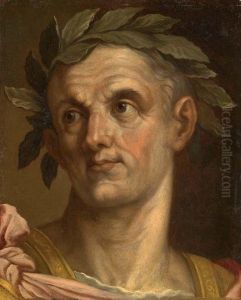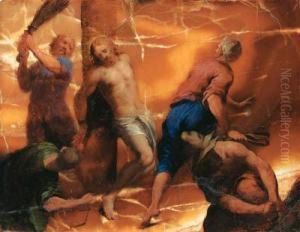Domenico Brusasorzi Paintings
Domenico Brusasorzi was an Italian painter of the Renaissance period, born in 1516 in Verona, Italy. He was a prominent figure in the Veronese school of painting, which was characterized by its vibrant color palette and emphasis on decorative detail. Brusasorzi initially trained under his father, who was also a painter, before continuing his artistic education with other local masters in Verona.
His work was influenced by the likes of Raphael and Parmigianino, and later by the Venetian masters, particularly the works of Titian. Brusasorzi's paintings often incorporated classical themes and exhibited a masterful use of color and composition, which was a hallmark of the Venetian style.
Throughout his career, Brusasorzi worked on various commissions for religious institutions and private patrons, producing altarpieces, frescoes, and portraits. Among his notable works are the frescoes in the church of San Bernardino in Verona and the altarpiece for the church of San Nazaro e Celso, which showcase his ability to blend religious iconography with the naturalism and grace typical of the Renaissance.
Despite his success, Brusasorzi's life was marked by personal tragedies, including the early death of his wife and children. This had a profound impact on his work, introducing a somber and reflective quality to his later pieces. Domenico Brusasorzi passed away in 1567 in Verona, leaving behind a legacy that would influence the next generation of Veronese painters, including his own pupils, such as his son Felice Brusasorzi, who also became a distinguished artist in his own right.




















